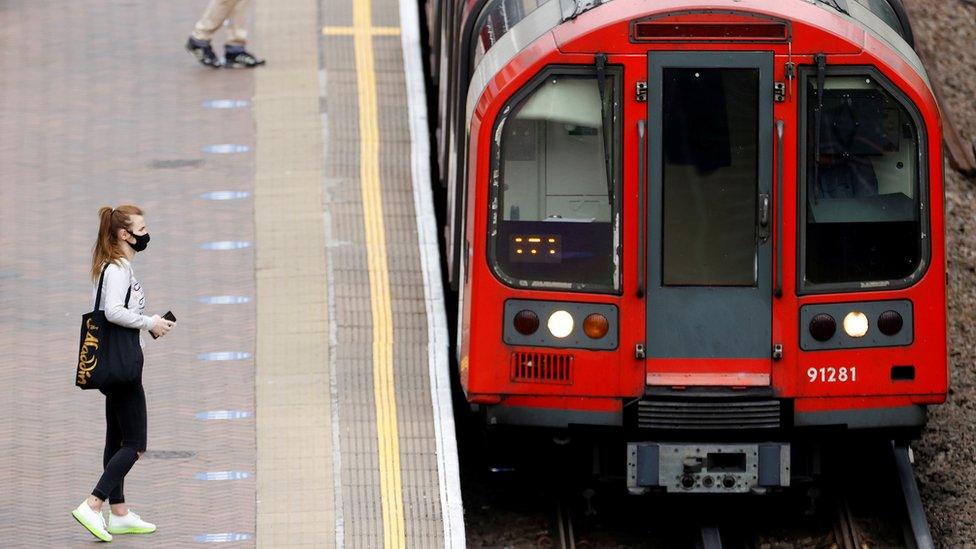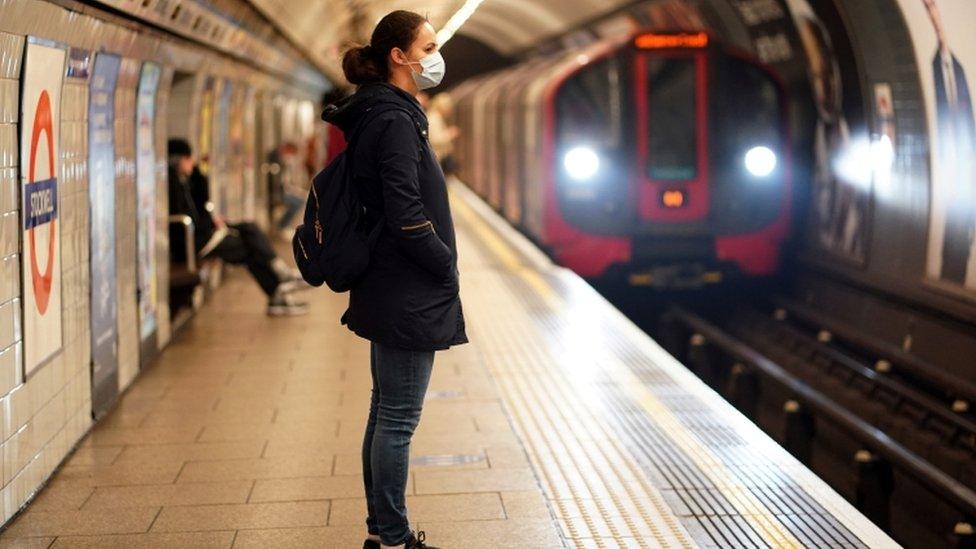Using big data to avoid Tube crowding
- Published
- comments

Canning Town remains one of London's busiest Tube stations
Tucked away on Transport for London's (TfL) website is a glimpse of what the future could hold for passengers so that they can avoid using public transport at busy times.
Currently it is rather slow and clunky, but these graphs show, external when Tube stations are at their busiest.
What is interesting is TfL is using card data from Oyster and contactless on the gate lines to show how busy the station is, and the potential for data use on transport is huge.
For example, it could mean transport authorities can be much smarter in how they develop their timetables.
It could also influence how they build new infrastructure, set staffing levels and how often they open and close barriers to control the flow of passengers.
It could even shift passengers into travelling at quieter times through clever ticket prices.

Before the second national lockdown more and more passengers were using the Tube
The data could also influence what messaging transport authorities put out.
Commuters can be very receptive to messaging and so perhaps you could do very targeted communications at one station to get passengers to change their habits.
Passengers are also creatures of habit. Could it, therefore, tell passengers that there are actually more efficient and quicker routes?
In the future, it could help model how infrastructure is designed.
Lauren Sager Weinstein, TfL's head of analytics, wrote in 2016 that valuable data could be used to "improve safety in London".
"We use big data to analyse trends from death and serious injury on the roads, which has allowed us to identify the major contributory factors and then better target preventative action.
"In 2015 the capital's first interactive digital collision map was launched, which means anyone can now see where historic collisions have taken place in London dating back over 10 years.
"This tool has only been possible as a result of using big data and forms a key part of a continued drive to reduce the number of casualties on London's roads," she said.

Data on TfL's website shows the times stations are busiest
Gareth Dennis, who is a rail engineer and writer, told me: "Data is the way that we understand the shape that transport has to be.
"Data allows us to be a bit more targeted in what we do so there are huge opportunities to do a better job with the assets and the infrastructure that we now have."
He added that the information "needs to be turned into public data and made easily accessible in a format people can use".
"The power of that is unimaginable... There are these people out there who are very clever and who knows what you will get with the power of some of this stuff."
- Published1 November 2020

- Published27 October 2020

- Published2 November 2020
